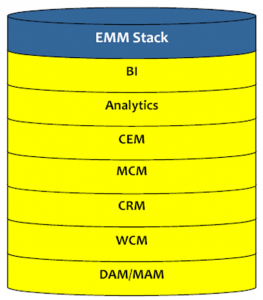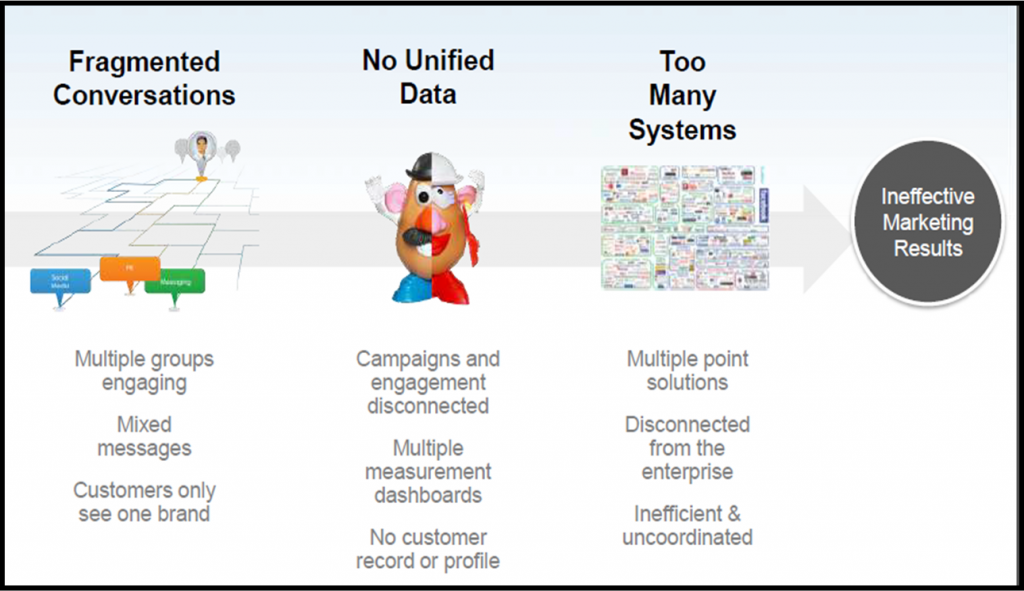Enterprise Marketing Management is a new class of software applications that is emerging to address the urgent demand that marketing automate and integrate functions from acquisition, through to retention and loyalty.
Investment firm Jordan Edmiston Group (JEGI) has recently released what they call a Sector Insight Brief into the developing EMM application stack, which can be described as a technology infrastructure that supports a synchronized approach to marketing strategy, development, delivery, and measurement, across the marketing mix.
“Demand is strong, and budgets are sizable, for a new class of digital marketing services required to build and maintain the stack,” the JEGI brief states.
“These services actually look more like technology consulting and IT services. The outlook for growth in this new services category is attracting new providers to the market and is driving continued growth in the stack and a vibrant M&A market.”
Between 2010-2012, four companies (“The Big Four”) have invested over $20 billion in marketing technology M&A: Adobe, IBM, Oracle, and Salesforce.
Here’s how JEGI pictures the developing stack:
Not sure about all the acronyms? Here’s the EMM lexicon: BI (Business Intelligence), CEM (Customer Experience Management), MCM (Marketing Content Management), WCM (Website Content Management), DAM (Digital Asset Management) and MAM (Marketing Asset Management.
How’s your stack shaping up? Are your vendors and professional services partners up to it? Does your own team have the necessary skills and appetite to engage? And top management?
As Forrester Research’s Robert Brosnan said in a 2012 report, “marketing today is impossible without significant investments in technology”.


